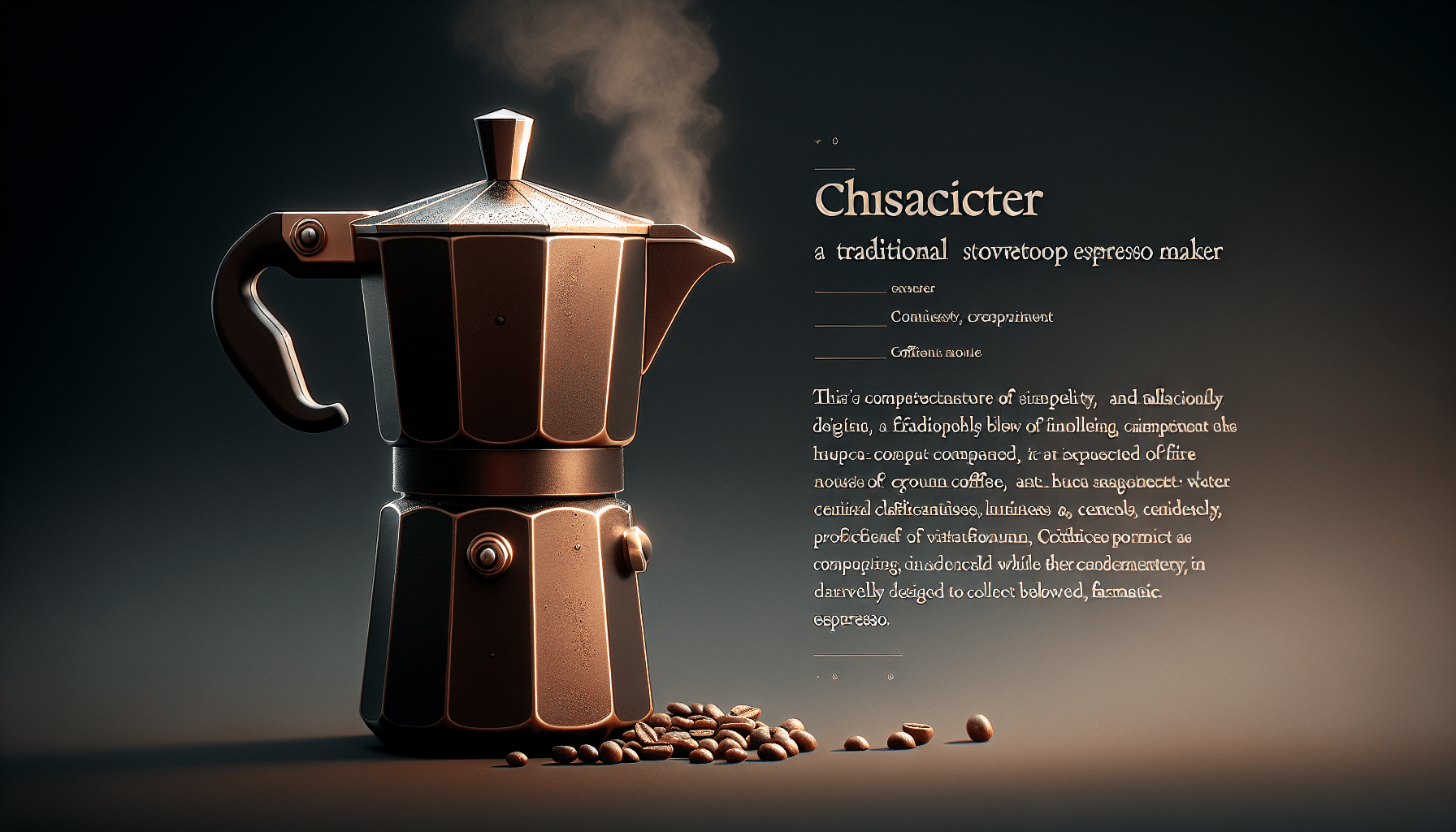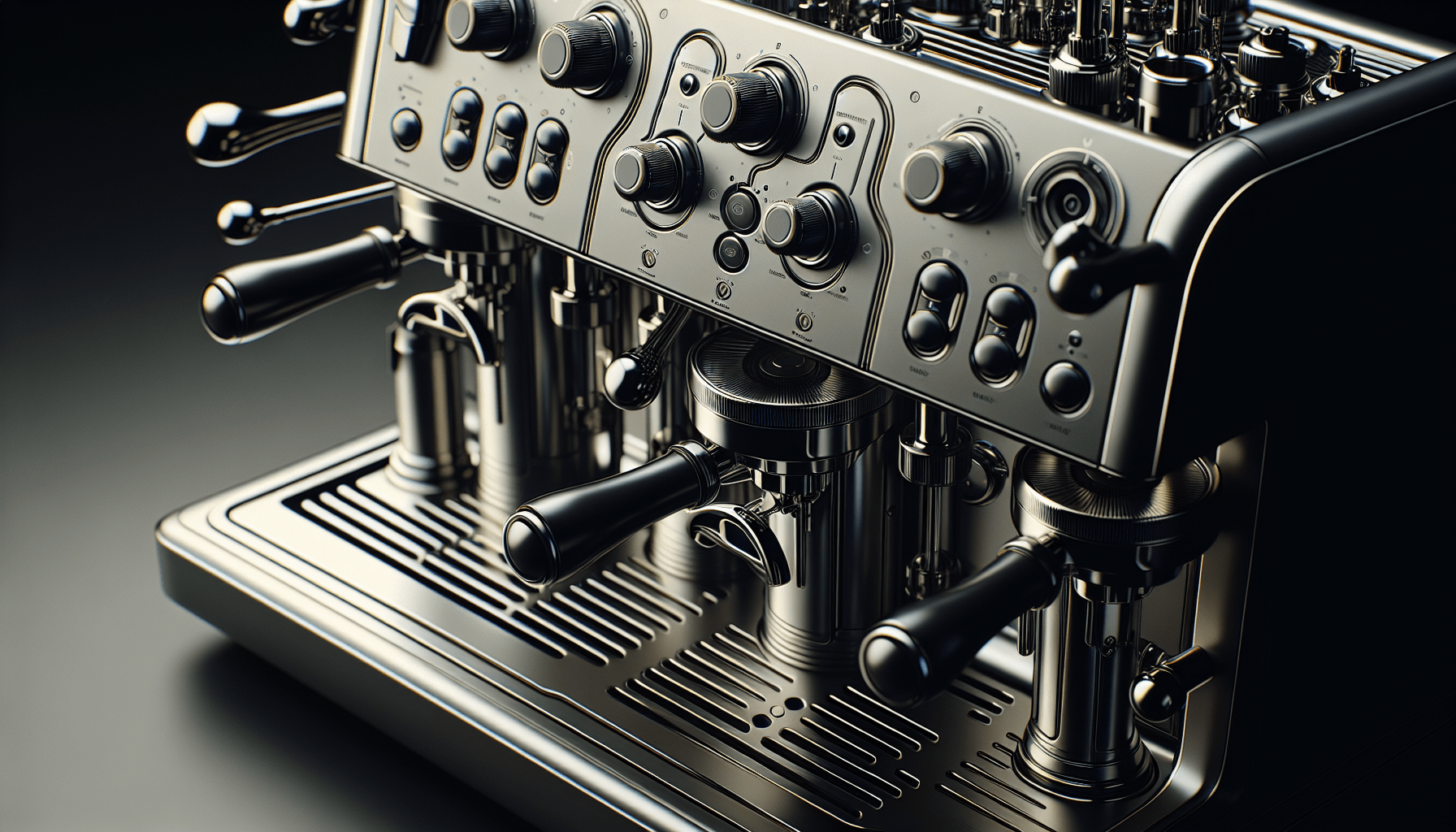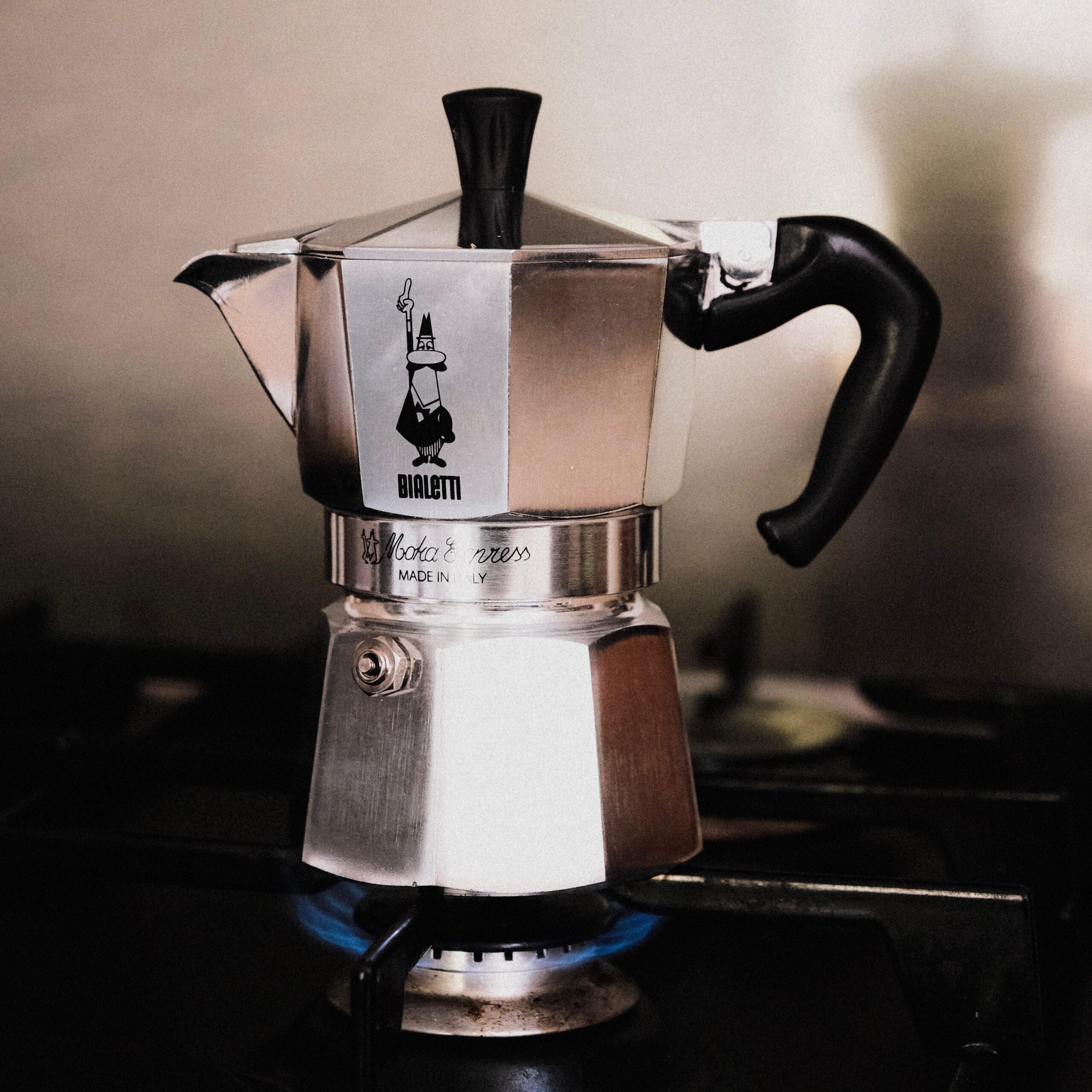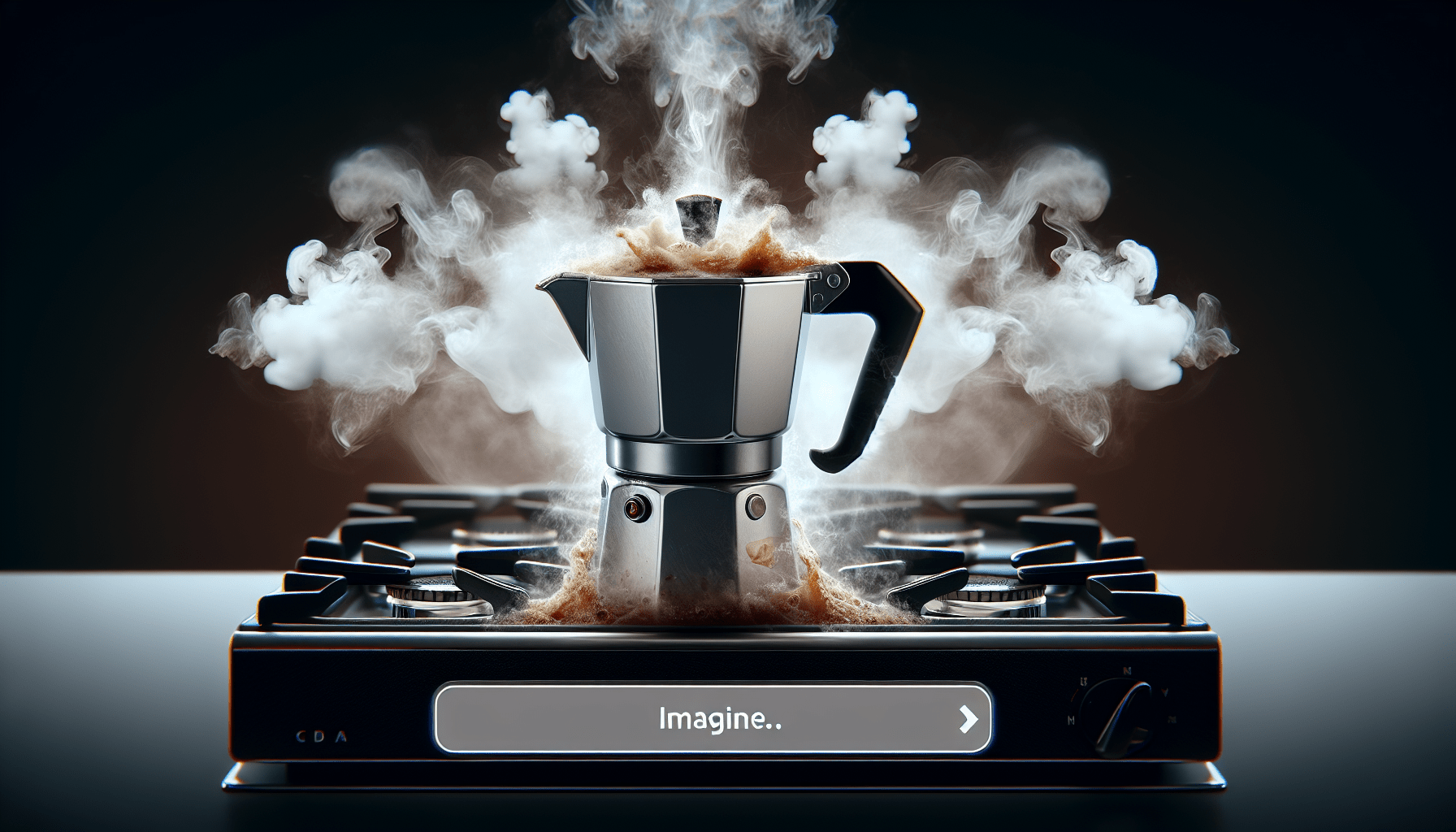So, you’ve heard everyone around you talking about this thing called a stovetop espresso maker, and you can’t help but be curious. What exactly is it, and why is everyone raving about it? Well, let me break it down for you. A stovetop espresso maker, also known as a Moka pot, is a unique coffee brewing device that allows you to make delicious, full-bodied espresso right on your stovetop. It’s a compact and affordable alternative to expensive espresso machines, making it a popular choice for coffee enthusiasts and those looking to enjoy a rich cup of espresso from the comfort of their own home. Intrigued? Let’s explore further! A stovetop espresso maker, also known as a moka pot, is a small coffee brewing device that allows you to make rich and flavorful espresso right on your stovetop. It consists of three main parts – a bottom chamber for water, a middle chamber for ground coffee, and a top chamber where the brewed espresso is collected. This compact and efficient device is a favorite among coffee lovers who appreciate the simplicity and taste of a traditional stovetop brew.
Definition of a Stovetop Espresso Maker
A stovetop espresso maker is a type of coffee maker that uses steam pressure to extract the flavors and oils from ground coffee, producing a concentrated and aromatic espresso. It is commonly made of aluminum, although stainless steel and other materials can also be used. This simple yet effective device has been around for decades and continues to be a popular choice for coffee enthusiasts worldwide.
How It Works
The stovetop espresso maker works by utilizing heat from a stovetop burner to generate steam pressure. As the water in the bottom chamber heats up, the steam rises, passing through the coffee grounds in the middle chamber. This steam pressure forces the water to extract the coffee’s oils and flavors, resulting in a rich and robust cup of espresso. The brewed espresso then collects in the top chamber of the device, ready to be poured and enjoyed.
Alternative Names
Although commonly referred to as a stovetop espresso maker or moka pot, this device goes by different names in various parts of the world. In Italy, where it originated, it is often called a caffettiera or macchinetta del caffè. In other countries, it may be known as a percolator, stovetop coffee maker, or even a stovetop espresso kettle. Regardless of the name, the concept and functionality remain the same.
Benefits of Using a Stovetop Espresso Maker
Affordability
One of the key advantages of using a stovetop espresso maker is its affordability. Compared to expensive espresso machines, a moka pot is relatively inexpensive and provides excellent value for money. You can enjoy the flavors of espresso without breaking the bank, making it an ideal choice for those on a budget or coffee enthusiasts who prefer a more cost-effective option.
Portability
Another great benefit of a stovetop espresso maker is its portability. Its compact and lightweight design allows you to take it anywhere, whether you’re going on a camping trip, staying in a hotel, or simply want to enjoy espresso at a friend’s house. Unlike bulky espresso machines, a moka pot can easily fit into your bag or suitcase, ensuring you can have your favorite brew wherever you go.
Versatility
A stovetop espresso maker offers versatility in the types of coffee you can brew. While it excels in producing a strong and concentrated espresso, you can also use it to make other coffee-based drinks like lattes, cappuccinos, or Americanos. By adjusting the ratios of coffee to water, you can experiment and create your own unique coffee creations, tailoring them to your taste preferences.
Different Types of Stovetop Espresso Makers
Moka Pot
The traditional moka pot is the most common type of stovetop espresso maker, known for its iconic design. It typically consists of a bottom chamber for water, a middle chamber for ground coffee, and a top chamber where the brewed espresso collects. The moka pot is available in different sizes, allowing you to choose one that suits your brewing needs. It is easy to use, affordable, and produces a strong and flavorful cup of espresso.
Cafetière à Piston (French Press)
While not strictly a stovetop espresso maker, a French press can also be used to brew espresso-like coffee on a stovetop. This type of coffee maker uses a plunger mechanism to separate the brewed coffee from the grounds. By using a fine grind and shorter brewing time, you can achieve a strong and concentrated coffee similar to espresso. However, it is important to note that the taste and texture may differ slightly from a traditional espresso.
Percolator
While often associated with drip brewing, certain types of percolators can also be used to make stovetop espresso. These stovetop percolators feature a unique design that allows water to cycle through the coffee grounds multiple times, resulting in a stronger and bolder brew. Percolators offer a more hands-on brewing experience and can be a fun alternative for coffee enthusiasts looking to experiment with different brewing methods.
Factors to Consider When Choosing a Stovetop Espresso Maker
When selecting a stovetop espresso maker, there are a few key factors to consider. These factors will help you find a device that suits your needs and brewing preferences.
Material
Stovetop espresso makers are available in a variety of materials, including aluminum, stainless steel, and even ceramic. Aluminum is the most common material used, as it efficiently conducts heat and is lightweight. Stainless steel provides durability and a modern aesthetic, while ceramic offers a unique and stylish design. Consider the pros and cons of each material and choose one that aligns with your preferences.
Size
Stovetop espresso makers come in various sizes, typically measured in cup capacity. It’s important to choose a size that matches your brewing needs. If you only brew espresso for yourself, a smaller size, such as a 3-cup or 6-cup moka pot, may be sufficient. For larger gatherings or if you enjoy sharing coffee with others, consider a larger size, such as a 9-cup or 12-cup moka pot.
Brewing Capacity
In addition to size, consider the brewing capacity of the stovetop espresso maker. This refers to the amount of coffee it can brew at once. If you prefer to brew a full pot of espresso and serve multiple cups at a time, choose a moka pot with a higher brewing capacity. However, if you prefer to brew smaller amounts more frequently, a smaller capacity may be suitable.
How to Use a Stovetop Espresso Maker
Using a stovetop espresso maker is a straightforward process, but it does require some technique to achieve the perfect brew. Follow these steps to make delicious espresso at home:
Preparation
-
Start by grinding your coffee beans to a fine or medium-fine consistency. A burr grinder is recommended for achieving a consistent grind.
-
Fill the bottom chamber of the stovetop espresso maker with cold, filtered water. Ensure not to exceed the safety valve or fill above the recommended level.
-
Insert the middle chamber onto the bottom chamber, making sure the rubber gasket is in place. The middle chamber is where you will add the coffee grounds.
-
Place the desired amount of coffee grounds into the middle chamber. The amount will depend on the size and capacity of your stovetop espresso maker. As a general guideline, use approximately 1 tablespoon of coffee grounds per 1.5 ounces of water.
Brewing Process
-
Screw the top chamber onto the middle chamber, ensuring a tight seal. This is where the brewed espresso will collect.
-
Place the stovetop espresso maker on your stovetop burner over medium heat. It is recommended to use a burner that closely matches the size of the bottom chamber to ensure even heat distribution.
-
Heat the espresso maker until you start to hear a gurgling or hissing sound. This indicates that steam is being generated and the water is pushing through the coffee grounds.
-
Once the gurgling sound is consistent, carefully remove the espresso maker from the heat source.
-
Allow the espresso maker to sit for a minute or two, allowing the remaining steam to push all the brewed espresso from the middle chamber to the top.
-
Slowly pour the brewed espresso into espresso cups or demitasse cups, being cautious of the hot temperature.
Cleaning and Maintenance
Proper cleaning and maintenance of your stovetop espresso maker are essential for ensuring its longevity and optimal performance. Here are some tips:
-
After each use, disassemble the different parts of the espresso maker and rinse them with warm water. Avoid using soap or abrasive materials, as they can affect the taste of future brews.
-
Use a cloth or soft brush to remove any coffee residue or stains.
-
Allow all the parts to dry thoroughly before reassembling the espresso maker.
-
Periodically, deep clean the espresso maker by descaling it. Descaling removes mineral deposits that can accumulate over time and affect the taste of your espresso.
Tips for Brewing the Perfect Stovetop Espresso
To enhance your stovetop espresso brewing experience, consider the following tips:
Choose the Right Coffee Grind
The grind size of your coffee plays a crucial role in the flavor and strength of your brew. For a stovetop espresso maker, a fine or medium-fine grind is recommended. This allows for optimal extraction and ensures a rich and balanced cup of espresso. Experiment with different grind sizes to find the one that suits your taste preferences.
Control the Heat
The heat level is another important factor in brewing the perfect stovetop espresso. It is advised to brew your espresso over medium heat to prevent excessive brewing time or burnt flavors. A gentle and consistent heat will result in a smooth and flavorful cup.
Experiment with Brewing Time
The brewing time can significantly impact the taste of your espresso. As a general guideline, aim for a brewing time of around 4-5 minutes. However, this can vary depending on factors such as heat intensity, grind size, and personal preference. Adjusting the brewing time can allow you to fine-tune the strength and flavor profile of your espresso.
Common Mistakes to Avoid When Using a Stovetop Espresso Maker
While brewing with a stovetop espresso maker is relatively straightforward, there are a few common mistakes to watch out for:
Using Too Much Heat
Applying too much heat to the espresso maker can cause the coffee to brew too quickly, resulting in an under-extracted and weak brew. It can also lead to unpleasant burnt flavors. It is important to find the right balance and brew your espresso over medium heat to achieve optimal results.
Using Pre-Ground Coffee
While pre-ground coffee may be convenient, it is recommended to grind your beans fresh before each brew. Pre-ground coffee loses its freshness and flavors more quickly, resulting in a less flavorful cup of espresso. Invest in a coffee grinder and grind your beans just before brewing to enjoy the best possible flavors.
Overcompacting the Coffee
When adding coffee grounds to the middle chamber of the espresso maker, avoid overcompacting them. This can restrict water flow and lead to uneven extraction. Gently level the coffee grounds in the chamber, ensuring they are evenly distributed without excessive pressure.
Maintenance and Care for a Stovetop Espresso Maker
Proper maintenance and care are essential for keeping your stovetop espresso maker in optimal condition. Here are some tips:
Regular Cleaning
After each use, rinse the various parts of the espresso maker with warm water to remove any coffee residue. Avoid using soap or abrasive materials, as they can affect the taste of future brews. Allow all the parts to dry thoroughly before reassembling the espresso maker.
Descaling the Espresso Maker
Over time, mineral deposits can accumulate in the stovetop espresso maker. Descaling, or removing these deposits, is crucial for maintaining the device’s performance and taste of your espresso. Follow the manufacturer’s instructions or use a descaling solution specifically designed for espresso makers.
Replace Worn-Out Parts
If you notice any signs of wear or damage on the rubber gasket or other parts of your stovetop espresso maker, it is important to replace them. Damaged parts can affect the brewing process and result in leaks or less effective brewing. Check with the manufacturer or retailer for replacement parts.
FAQs About Stovetop Espresso Makers
Can I use regular ground coffee in a stovetop espresso maker?
Yes, you can use regular ground coffee in a stovetop espresso maker. However, it is recommended to use a fine or medium-fine grind for optimal extraction. Pre-ground coffee specifically labeled for espresso is also suitable and can provide a more consistent and flavorful brew.
How long does it take to brew espresso with a stovetop espresso maker?
The brewing time for espresso with a stovetop espresso maker typically ranges from 4 to 5 minutes. However, this can vary depending on factors such as heat intensity, grind size, and personal preference. It is recommended to experiment with brewing time to find the ideal balance for your taste.
Can I use a stovetop espresso maker on an electric stove?
Yes, you can use a stovetop espresso maker on an electric stove. However, it is important to ensure that the bottom chamber of the espresso maker fits properly on the heating element. Select a burner that closely matches the size of the bottom chamber for even heat distribution and optimal brewing.
Conclusion
By now, you should have a thorough understanding of what a stovetop espresso maker is and why it is a popular choice among coffee enthusiasts. With its affordability, portability, and versatility, this simple yet effective device offers a delightful brewing experience right on your stovetop. Whether you choose a moka pot, a French press, or a percolator, there is a stovetop espresso maker that will suit your preferences and brewing needs. Remember to consider factors such as material, size, and brewing capacity when making your purchase. By following the proper techniques, tips, and maintenance guidelines, you can enjoy delicious and aromatic espresso with every brew. So, embrace the simplicity and taste of stovetop espresso and make an informed decision when purchasing your stovetop espresso maker. Cheers to your future brewing adventures!




